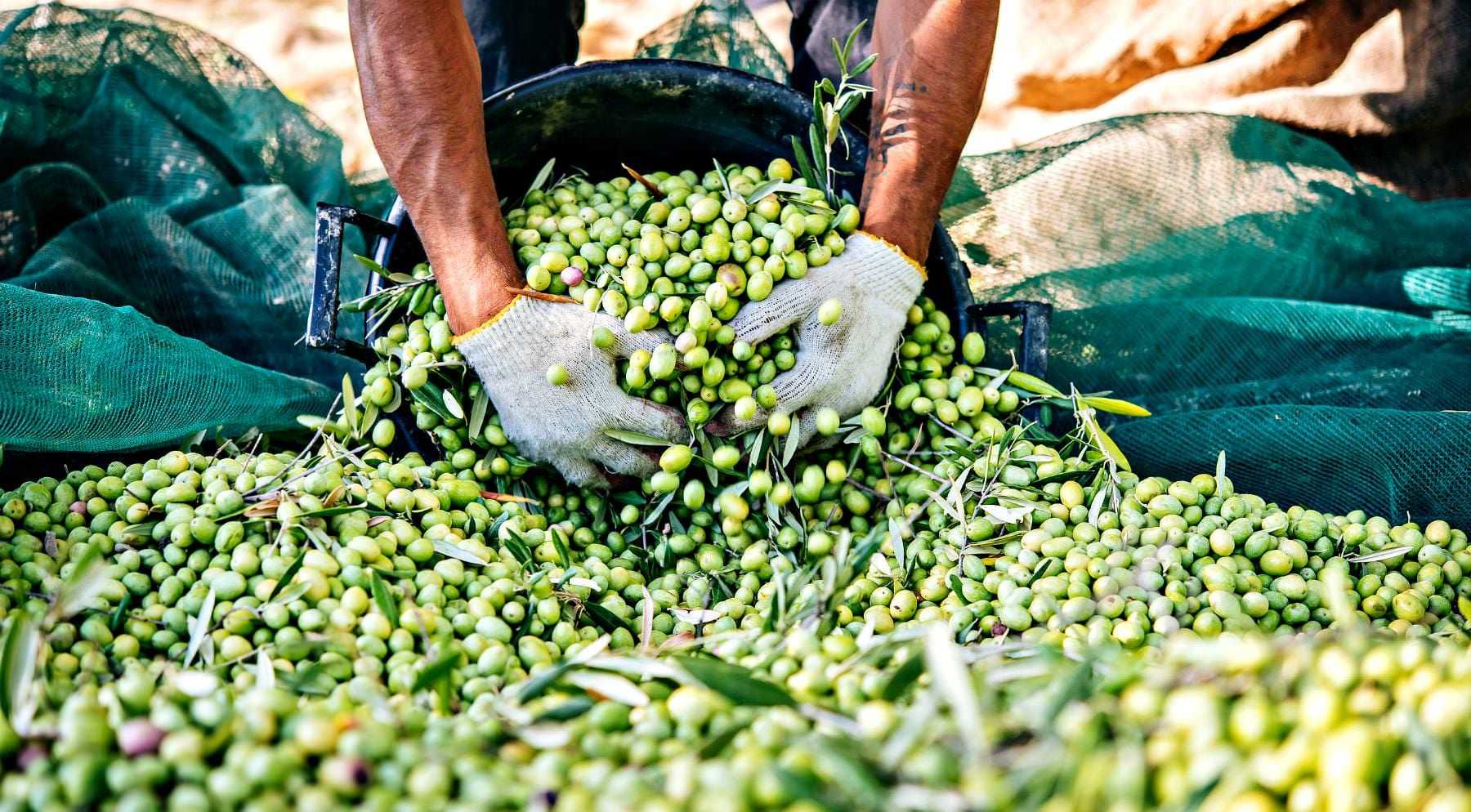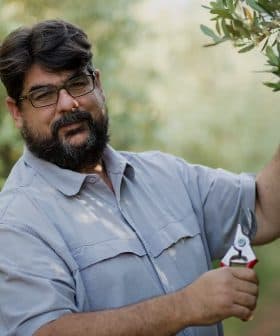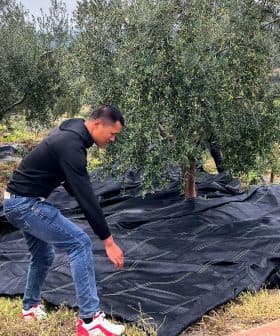What Does the Future Hold for Pitted Olive Oils?
With more producers taking advantage of advances in milling technology, are pitted oils set to become a more common sight on store shelves or are they destined to remain a niche product?
 Annalisa Torzilli at Il Molino
Annalisa Torzilli at Il MolinoDespite a long history, the practice of producing pitted olive oils has not caught on commercially, but some producers, like Annalisa Torzilli of Il Molino, continue to make denocciolati oils. These oils are said to have higher levels of polyphenols, fewer peroxides, and lower acidity, making them a more delicate and potentially healthier alternative to conventional oils.
Pitted olive oils — oils that have had the stone removed before processing — are nothing new; evidence suggests the early Romans produced them. Despite a long history though, it’s fair to say the practice of removing the pits before milling olives has never really caught on commercially.
We now produce denocciolati oils every year, and it represents the flagship product in our range.
With more producers taking advantage of advances in milling technology these days, are pitted oils, known as denocciolati in Italy, set to become a more common sight on store shelves or are they destined to remain a niche product?
One producer who has been making pitted oils for some time is Annalisa Torzilli of Il Molino, a farm near Viterbo on the Umbria-Lazio border of Italy. Annalisa first got into pitted oils while taking an olive oil sommelier course in 2002.
“Since then, I’ve always appreciated this type of oil, more delicate than conventionally-produced oils,” Torzilli said. She was so impressed that, when the farm installed their own mill in 2003, she also ordered a pitting machine. “We now produce denocciolati oils every year, and it represents the flagship product in our range which we label with the Tuscia DOP.”
Antonino Mennella of Madonna dell’Olivo, a small estate with around 2,000 trees — a mix of Carpellese, Itrana, Carolea and other varieties — near Salerno, is another producer with a long history of making pitted oils. In his case, it was the legendary Italian wine and food critic Luigi Veronelli who encouraged him. “Veronelli wanted me to participate in his Olio secondo Veronelli project which encouraged producers to make monocultivar and denocciolati oils,” explained Antonino.
Antonino is adamant that in certain respects, pitted oils enjoy an advantage over conventional oils. “Pitted oils have higher levels of polyphenols, fewer peroxides and lower acidity, findings that were confirmed by chemical tests carried out at my mill,” he said. Like Annalisa, he also draws attention to the more delicate character of these oils, “From a sensory perspective, these are oils with a softer, less pungent profile.”
The exact properties of pitted oils are not universally agreed upon. Alessandro Leone of the University of Foggia’s Department of Science of Agriculture, Food and Environment (SAFE) has conducted research into the area.
“Analytical results indicate that stoning did not affect free acidity and peroxide values, but showed higher concentrations of phenol compounds,” Alessandro noted. His research confirmed that the practice can influence an oil’s sensory characteristics.
“The stoning process modified the volatile profile by increasing the C6 unsaturated aldehydes strictly related to the cut-grass sensory notes of the oil, increasing the sensory score compared to traditional oils,” said Alessandro. But even in this area, there is an element of uncertainty. “A well-balanced and bitter and pungent taste is obtained in stoned oil, although some varieties show more prominent bitter components when the core is removed.”
One expert who is keen for more research is CalAthena consultant Alexandra Kicenik Devarenne. “I would like to see more experimentation with depitting. I have tasted some excellent and distinctive depitted oils, and I’d be interested in seeing what the technique yields with more varieties.” Devarenne echoes the general lack of consensus on the organoleptic characteristics of pitted oils. “It seems like there is more to be learned about the polyphenol profiles that result from depitting since the sensory results sometimes seem contradictory.”
There are also other complications for producers making pitted oils. As you would expect, the addition of machinery — typically a separate pitting machine — means a higher cost of production and, according to Leone, the pit fragments in traditional oil extraction can actually help the extraction process, breaking down olive pulp cells and making the separation of oil and water easier.

Harvest in Sicily
Torzilli admitted that yields tend to be lower than conventional oils, often by up to 1.5 percent in her case. All of which means, of course, higher prices on the shelves. When you hear all of this, it’s perhaps a surprise there are any producers making pitted oils at all.
Both Torzilli and Mennella agree that many retailers and distributors have no idea what pitted oils are. Commercially, this makes their higher prices even more of an obstacle. Even specialist importers can be skeptical of their value.
Yacine Amor runs the London-based Artisan Olive Oil Company. “We do not stock any depitted oils as we do not see a difference in quality to non-pitted oils of similar standards,” he said, adding that they have “not gained much traction in the market.”
Torzilli has found a market for her pitted oils among customers who find them more easily digestible than conventional oils as well as fruitarians but admits that it is likely to remain a niche. Mennella is more positive, saying he sees a “positive future for denocciolati.”
Whatever the future holds commercially, from a technical point of view, partial pitting machines may represent an important advance. Alessandro Leone says he has been seeing an increase in producers, especially in Puglia, Italy, adopting this technology.
Partial pitting equipment can be set to remove variable proportions of the pit — generally around 60 percent — leaving enough stone fragments for the benefits associated with conventional extraction to be retained.
Research carried out by Alessandro’s team also showed that mills using this equipment did not suffer a noticeable reduction in yield and allowed olive pits to be recovered (they can be sold for fuel and other uses).
But it is the sensory findings from Alessandro’s research which shows why more producers may join the likes of Tirzilli and Mennella in making pitted oils. “The oils obtained were characterized by more marked green fruitiness, flavor and aroma than the oils produced using the traditional processing systems,” noted Alessandro.









